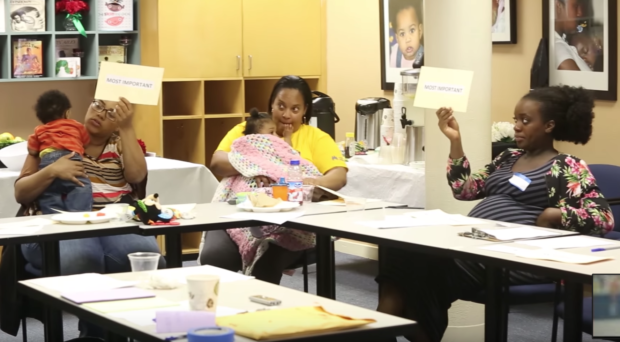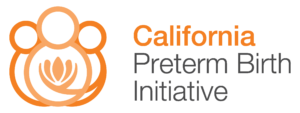
If you and your community were impacted by a serious health condition, would you want to have a say in local and national research priorities?
“Nothing About Us Without Us!” is a slogan that has become a rallying cry for community partnership in all public services and policy setting. For our team at UCSF California Preterm Birth Initiative (PTBi-CA), the saying could easily describe what we consider to be the best approach to research for improving birth outcomes in the United States.
The preterm birth epidemic

Preterm birth has persisted at epidemic levels in our country for decades and disproportionately affects women of color. Black women give birth preterm at almost a 50 percent higher rate than all other women in the U.S., regardless of both education and socioeconomic levels. At PTBi-CA, we see mounting evidence that stress, related to structural and interpersonal racism, and other social determinants of health are major drivers of poor birth outcomes in Black families.
However, women of color have not been included in setting preterm birth research agendas. Studies continue to use traditional approaches that give privilege to small groups with decision-making power, without direct input from those with lived experience. Furthermore, research is one of the last domains of the healthcare enterprise that lacks patient and public involvement at every level.
Thankfully, there is growing international consensus that research must be conducted in partnership with patients and communities, and not on or for them. This approach can improve recruitment and retention, provides greater relevance and credibility, and accelerates translation of results into clinical practice. Our current work to elicit and prioritize potential research questions and topics with women of color is a step towards full research partnership.
Dismantling the hierarchy and fighting historical abuses
To establish trust, we invested in the community’s existing infrastructure and capacity-building.
Typical methods of involving patients and the public in research include gathering input from patient advocacy organizations, inviting patients or their representatives to stakeholder consultation meetings, or conducting surveys. However, these approaches typically begin with a review of existing scientific literature to identify gaps in knowledge. This may inadvertently lead to traditional medical-establishment priorities overshadowing those of people directly affected by the condition.
To develop a new pregnancy and newborn care research strategy, we at PTBi-CA sought a deeper, more authentic partnership approach by using the Research Priorities of Affected Communities (RPAC) protocol. The protocol is based on the Research Justice Framework, where experiential knowledge as well as cultural and spiritual knowledge have equal value with “mainstream” knowledge.
Before we could begin the work, we partnered with seven community-based organizations (CBOs) that serve pregnant persons of color in areas that have high preterm birth rates. Establishing trust with our CBO partners was a priority and proved challenging due to the historical abuses of Black and other minority communities in medical research. To establish trust, we invested in the community’s existing infrastructure and capacity-building. For example, we compensated CBO partners for hosting focus groups, for co-facilitating and for personally inviting clients who met the inclusion criteria. We offered participants opportunities for further engagement with future research and held community events to educate and raise awareness.
The application of the Research Justice framework and the RPAC method led to great results, reported in our new paper in BMC Pregnancy and Childbirth. Fifty-four women generated a total of 375 potentially researchable questions, clustered within 22 topics. The questions represent a wide range of domains, from basic science, translational, clinical, health and social care delivery to policy and economic research. The findings directly contributed to our initiative’s research strategy and our partnership with community would not stop there.
Community evolves the research funding process
“I’m feeling really good at the fact that we are involved, hopefully, in the next generation of healthy babies.”
We invited our study participants, and those from other community partnerships, to join a Community Advisory Board (CAB) to continually advise us. Each year, CAB members are invited to participate in the grant review process to fund projects that are in line with the community research prioritization questions. In addition to participating in grant-review and funding decisions, the CAB helped to revise the grant application process to include plain English summaries and to greater emphasize community partnership and research dissemination.
The CAB regularly interacts with investigators to increase community partnership literacy among researchers and research literacy among community members. Some of our grantees have gone on to include community partnership in other studies not funded by PTBi-CA. Also, several of the CAB members or community research partners have since transitioned to employment within our organization in a variety of research roles.
None of this progress would be possible without our community partners’ willingness, support and expertise. Our hope is that more research organizations will adopt a research justice framework in their work to help heal the wounds created by past research abuses and to accelerate a fully community-partnered research agenda, leading to positive change and better outcomes for all. As Davina Countee, a community member and study participant, commented about our approach: “I’m feeling really good at the fact that we are involved, hopefully, in the next generation of healthy babies.”
Comments